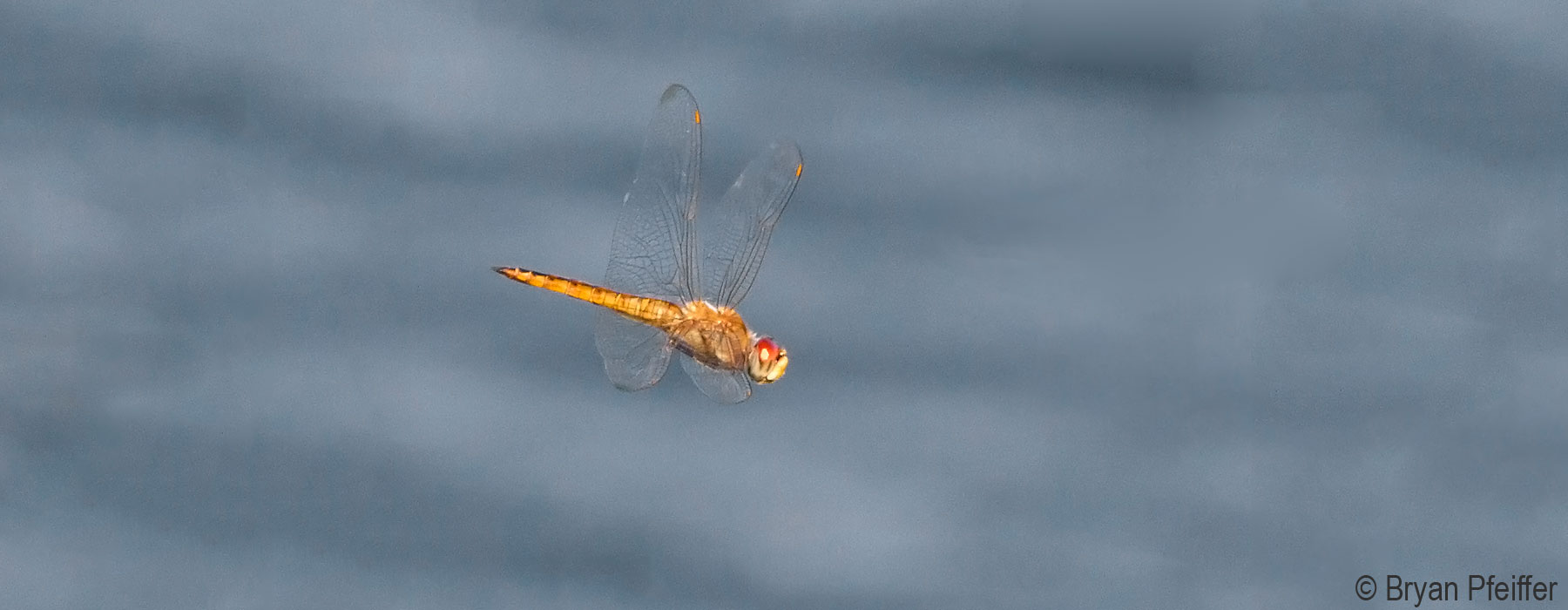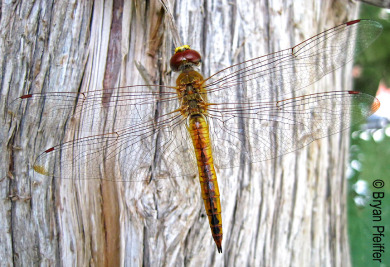Here's the albatross of insects. Actually, it gets around on its own power much farther than any bird. It's a world-traveling dragonfly called Wandering Glider.
VCE has Wandering Glider on its radar. Having studied far-ranging Peregrine Falcons for so long, we're bringing some of our skills to the conservation of insects on the move.
About three inches long, Wandering Glider is a golden flying machine. It is found on every continent except Antarctica. Its long, wide wings allow this dragonfly to cross oceans, making Wandering Glider a champion flier among dragonflies.
It is also steeped in mythology. Pantala, for example, is a symbol of courage and victory in Japan. Large numbers appear in Honshu (the nation’s main island) and Kyushu (the third largest island) around August 15, a date on which Buddhists believe ancestral spirits visit their homes.
Here in the Northeast, we see dragonfly migration mostly in the fall. In fact, birders often notice migrating dragonflies from hawkwatch sites. Where they do, we’re not entirely sure. But we’re learning.
Researchers have attached tiny radio transmitters to some migratory dragonfly species in order to track their movements (Wikelski 2006). But we can also can catch a migrating dragonfly in, say, New Jersey, and by measuring trace concentrations of certain molecules (stable isotopes) in its tissue can learn about where it grew up. It turns out, among dragonflies, you are what you eat. What a dragonfly ate while growing up can give a biologist a clue to where it was born (or hatched in this case) no matter where or when it is caught by a researcher. With tools like these only now are we beginning to learn how far and for what reason dragonflies are migrating.
References
Wikelski, M., Moskowitz, D., Adelman, J. S., Cochran, J., Wilcove, D.S., and May, M.L. (2006) Simple rules guide dragonfly migration. Biol. Lett. (2006) 2, 325–329


